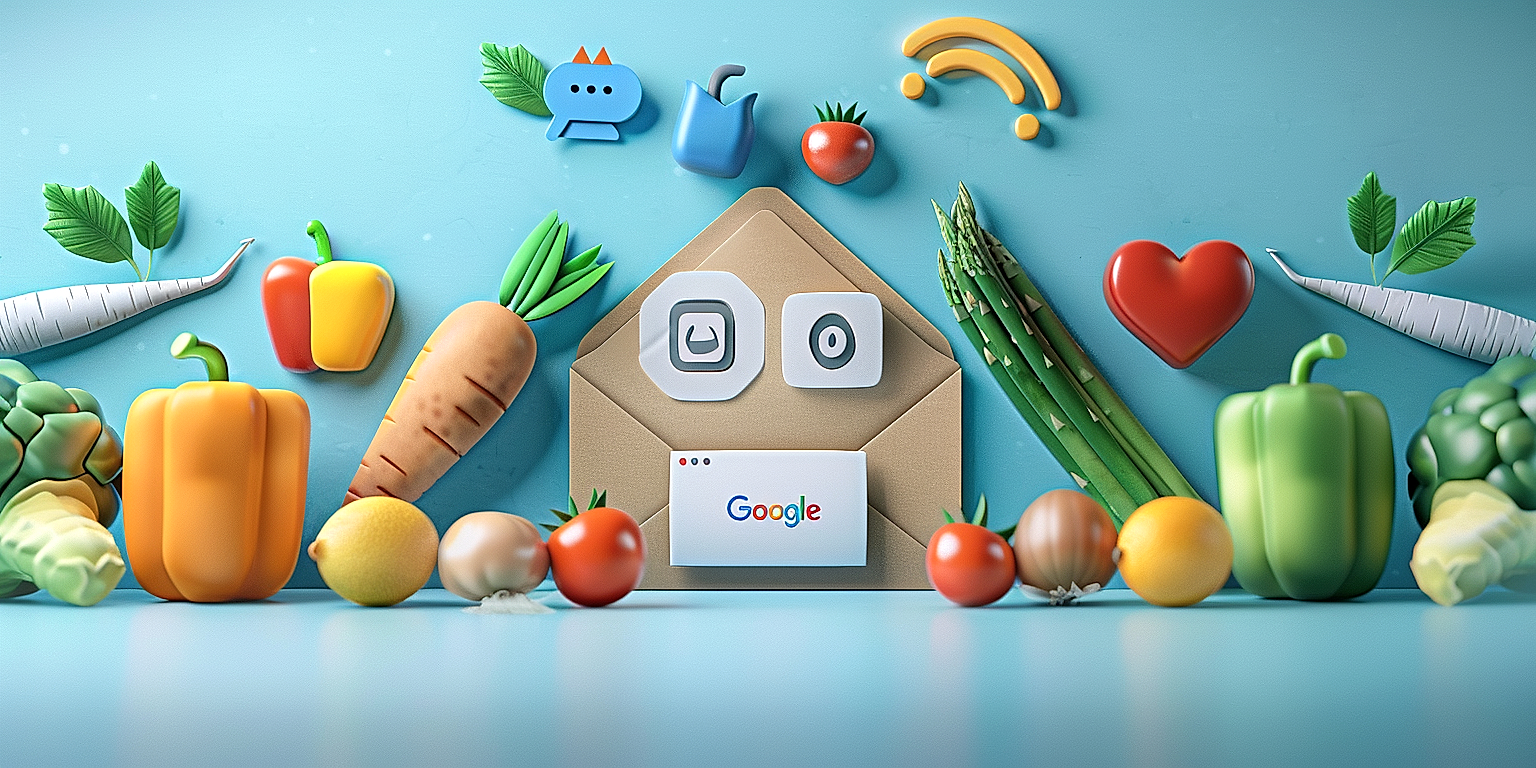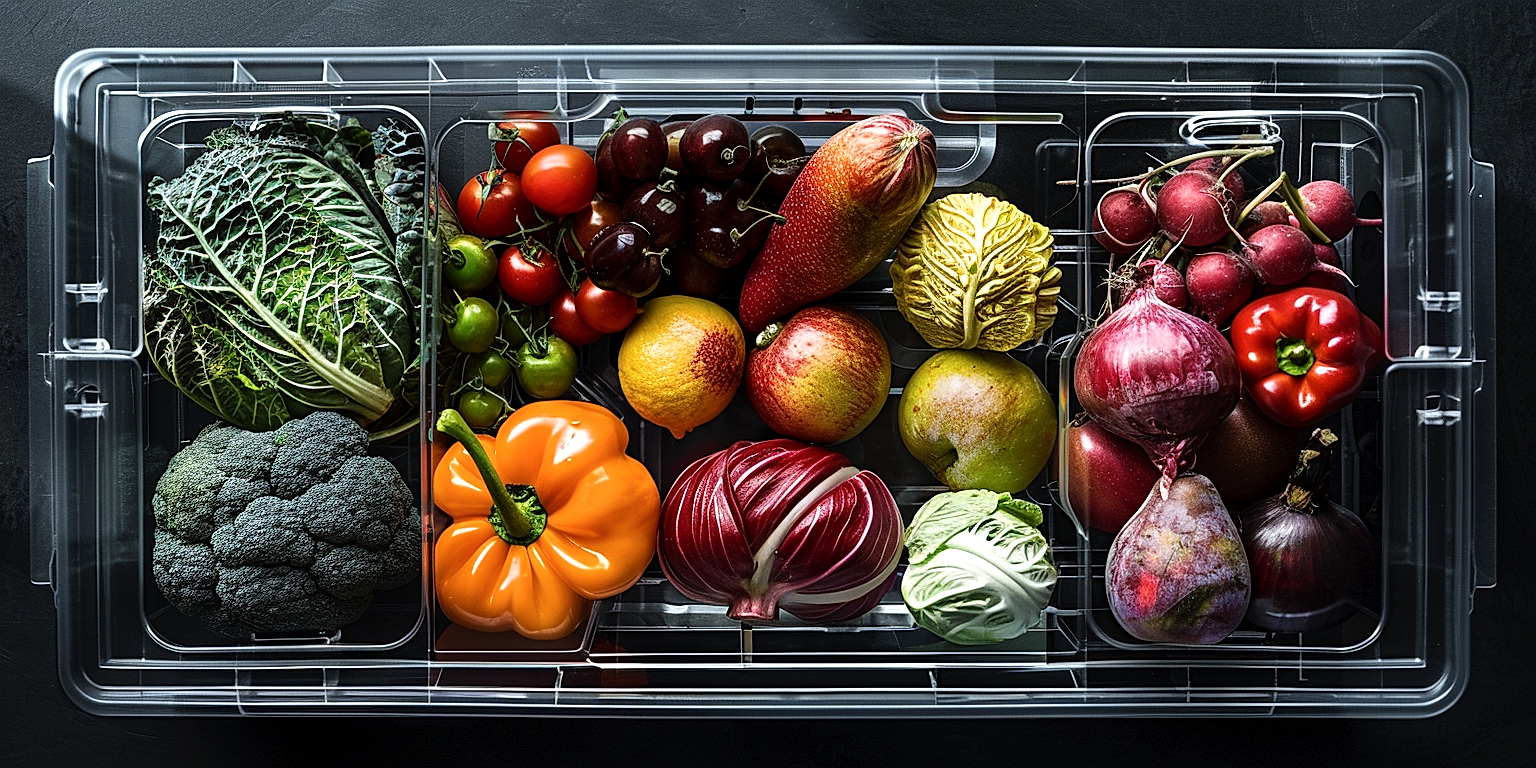As a produce retailer in the digital era, it is essential to understand the dynamism and opportunities that lie within e-commerce marketing.
Mastering effective online strategies can transform the visibility and profitability of your business significantly.
An optimized website, for instance, can reach new markets and operate ceaselessly.
Engaging content can create value while analytics can provide you with critical business intelligence.
This article explores some of the contemporary methods retailers are utilizing to maximize their digital footprint in the produce industry.
It will provide insights that can elevate your marketing strategies in the digital marketplace.
Contents
- E-commerce Marketing Strategies For Produce Retailers
- 1. Offer online-only discounts and promo codes.
- 2. Implement email marketing for personalized offers.
- 3. Use social media for product promotion.
- 4. Implement a Loyalty Program for Frequent Shoppers
- 5. Use SEO strategies to boost online visibility.
- 6. Partner with influencers for product endorsement.
- 7. Utilize Google AdWords for targeted advertisements.
- The Bottom Line
E-commerce Marketing Strategies For Produce Retailers
1. Offer online-only discounts and promo codes.
One effective stratagem in e-commerce marketing that produce retailers can leverage are online-only discounts and promo codes.
The accessibility and convenience of the internet has made it the go-to marketplace for a multitude of consumers, and providing online-only discounts is a proficient method to attract and retain customers.
Promo codes are one form of these online-only special offers.
Retailers can fashion them in a variety of ways such as a percentage off the total purchase, a dollar amount discount, or free shipping.
These incentives motivate consumers to make quick purchasing decisions and feel a form of gratification from the perceived savings.
Particularly in the realm of produce retail, where products have a quick turnover and short shelf-life, the introduction of online-only discounts and promo codes can incredibly boost sales.
This not only prevents waste from unsold items but also provides an additional revenue channel.
Through these online-only offers, produce retailers can effectively manage their stock levels, underscore the value they place on their customer base, and position their business as a trusted provider of high-quality products at affordable prices.
These discounts and promo codes can also be offered during specific seasons, on bundles of products, or based on the purchasing habits of the customers.
Hence, adding to the overall customer shopping experience and giving the customers a reason to keep coming back to your online store.
To ensure success, it is essential for produce retailers to seamlessly integrate these discounts and promo codes into their websites or mobile applications.
The discount or promotional code should be easy to apply at checkout, without any need for complicated processes or additional steps.
Remember, the primary aim is to impress your customers with savings, not to frustrate or confuse them with a complex system.
Furthermore, it’s important to advertise these offers adequately, both on the website and through other e-commerce marketing channels, such as email newsletters and social media platforms.
This ensures that existing and prospective customers are aware of the opportunity to save, thus driving more traffic and revenue to your online store.
Online-only discounts and promo codes not only incentivize purchases but also act as a tool for acquiring new customers, retaining existing ones, and increasing overall sales.
So, develop thoughtful, attractive, and easily accessible online-only discounts as part of your e-commerce marketing strategy to elevate your produce retail business.
2. Implement email marketing for personalized offers.
One of the most effective e-commerce marketing strategies is the implementation of email marketing for personalized offers.
It provides a way for produce retailers to directly connect with their customers.
A well-planned email marketing campaign can increase customer loyalty and encourage repeat business.
With email marketing, retailers can send tailored offers based on the purchasing habits of an individual customer.
This could include discount on specific products they frequently purchase or new product suggestions based on their past purchases.
Personalized offers make the customers feel valued and give them a reason to keep coming back.
Email marketing is also a great way to promote seasonal produce, giving customers a heads-up about what’s fresh and in-season.
Additionally, by gathering data from your customers’ purchasing histories, you can anticipate their future needs and offer them just what they need, when they need it.
The customers appreciate the convenience and personal touch, which encourages their loyalty and repeat business.
Another benefit of email marketing is the ability to track consumer engagement.
Through services like open-rate tracking and click-through tracking, you can measure the effectiveness of your email marketing campaigns.
These tools allow you to make data-driven decisions, optimizing your campaigns for maximum effectiveness.
Lastly, email marketing is a relatively cost-effective strategy with a high return on investment (ROI).
A study by the Direct Marketing Association found that for every $1 spent on email marketing, the average ROI is $38.
So, by investing time and effort in creating an effective email marketing campaign, businesses can increase customer retention and ultimately increase profits.
While it does require some technical knowledge, many online tools and services make it easy for businesses to implement and manage their own email marketing campaigns.
In the digital age, leveraging social media for product promotion is a powerful tool for e-commerce marketing, particularly for produce retailers.
The dynamism, interactivity, and real-time connection to consumers that social media platforms offer are unmatched by traditional marketing channels.
Platforms like Instagram, Facebook, Twitter, and Pinterest are popular choices for businesses in the food sector.
The visually appealing nature of produce can be fully capitalized on these platforms through high-quality images and engaging video content.
A retailer can create a vibrant online presence that reflects their brand image and values, showcasing the freshness and quality of their produce to entice customers.
By regularly posting engaging content, you can cultivate a dedicated following of users who are not only potential customers but also promoters for your brand.
A tool like Instagram stories can be used for quick updates, behind-the-scenes glimpses, or to showcase customer testimonials, thereby humanizing your brand and fostering a deeper connection with your audience.
Moreover, the use of hashtags and SEO-friendly captions can boost visibility and draw more consumers to your page.
By monitoring feedback, comments, and questions, and promptly responding, you can demonstrate your commitment towards customer satisfaction, thereby solidifying your online reputation.
Running contests, giveaways, or promotional campaigns on social media can create a buzz around your products and may encourage ‘shares’ or ‘likes’ that increase your reach.
On the other hand, paid advertising on social media, like Facebook and Instagram ads, can target your potential customers based on their past browsing behavior, increasing your chances of conversions.
Partnering with popular accounts or influencers in the food, health, or lifestyle space can help cross-promote your products to a broader, yet interested audience.
Using user-generated content in your social media promotion not only adds authenticity to your marketing but also encourages greater customer participation.
All these strategies can work in synergy to effectively promote your produce on social media, leading to increased awareness, customer acquisition, and ultimately, sales.
Remember, the key to success lies in consistency, engagement, and being in tune with the latest trends in the ever-evolving social media landscape.
4. Implement a Loyalty Program for Frequent Shoppers
To start with, implementing a loyalty program for frequent shoppers is an effective way for e-commerce businesses, specifically produce retailers, to cultivate repeat business and promote customer loyalty.
These programs incentivize customers to come back and do more transactions through awarding points, discounts, or even free items for each purchase they made.
A good loyalty program is designed with the customer in mind – it should be simple to use, beneficial to the customer, and relevant to the type of products being sold.
For instance, a produce retailer could offer a ‘fruit-of-the-month’ club, where customers receive a selection of seasonal fruits each month for a fixed annual or monthly fee.
This initiative not only assures consistent sales for the retailer but it also provides value and convenience to their clientele.
Another type of loyalty program that can be implemented is tiered rewards.
In this scheme, a customer’s rewards or benefits increase as their purchases accumulate.
For example, a customer might start at a bronze tier, earning a small percentage off each order, and could move up to a gold tier, earning larger discounts or even free delivery if they regularly order.
This kind of program can encourage customers to make larger or more frequent orders to reach the next reward level.
Also, a loyalty program provides the e-commerce business with valuable customer data.
Behavioral data obtained from customers enrolled in the program could guide future marketing strategies and personalization efforts.
More so, loyalty programs can be promoted through social media or email marketing to potentially entice new customers to shop and sign up.
When it comes to the complexities of launching a loyalty program, there are loyalty software available that can manage the process, track customer rewards, and analyze the program’s impact on sales.
In essence, a well-implemented loyalty program can be a strategic asset for e-commerce produce retailers to enhance customer satisfaction, retain existing customers, and acquire new ones.
5. Use SEO strategies to boost online visibility.
In the rapidly evolving world of e-commerce, using Search Engine Optimization (SEO) strategies is essential in maintaining a competitive edge, particularly for produce retailers.
SEO refers to the process of enhancing a website’s visibility on search engines like Google, boosting the chances of it being seen by potential customers.
The goal is to make your website appear in the top results of a search engine when customers search for products that you offer.
Succeeding in this can significantly increase your site’s traffic and conversion rates, hence bolstering sales.
Good SEO practices involve optimizing your website content with an intelligent use of keywords in your product descriptions, blog posts, and other site content.
This aids search engines in determining the relevance of your site to a user’s search query, thereby improving your ranking on the search results page.
Remember that SEO is not just about getting your site to show up on the first page of search results, but it’s about making sure your products are visible to the right audience and are easily accessible.
It’s crucial to carry out keyword research to discover what terms your potential customers are using when searching for products online.
Once identified, these keywords should be strategically incorporated into the content on your webpage and meta-tags to enhance searchability.
Producing high-quality, relevant content on your site is not only beneficial for SEO but also establishes you as a knowledgeable source in your niche market.
This results in better customer engagement and increased brand loyalty.
In addition, optimizing your site for mobile compatibility is essential as more and more people access the internet through their smartphones and tablets.
This includes making sure your site is responsive and user-friendly, which Google recognizes and rewards in its search results.
Keeping your website’s loading speed to a minimum also contributes to a better user experience and thus influences SEO rankings.
It’s also wise to leverage the power of local SEO if you have a brick-and-mortar location.
This is done by ensuring your business’s name, address, and phone number (NAP) are correct and consistent across all online platforms.
Implementing these SEO strategies boosts your visibility online, leading to an increase in leads, conversions, and ultimately, sales in your e-commerce produce business.
6. Partner with influencers for product endorsement.
In today’s digital age, one of the most influential and highly effective e-commerce marketing strategies is partnering with influencers for product endorsement.
When we speak about influencers, we refer to individuals who command a substantial following on social media platforms and whose opinions are highly valued amongst their followers.
One of the significant aspects of influencers is their ability to persuade and influence the purchasing decisions of their followers based on the trust and connection that they have built over time.
Endorsements from influencers can serve as a form of word-of-mouth advertising which, in contrast to conventional forms of advertising, is seen as more authentic and trustworthy.
Studies have shown that consumers are more likely to make a purchase based on a recommendation from someone they trust, like an influencer, compared to traditional advertisements.
As a produce retailer, associating your brand with an influencer who is well-known within your niche can dramatically increase your visibility and potentially boost your sales.
Influencers have an innate ability to humanize your brand, making it more relatable and accessible to your target audience.
Before partnering with an influencer, conduct extensive research to determine which influencer fits best with your brand’s image and values, and whose followers align with your target market.
Remember that the best matches result from influencer partnerships that share similar ethos and serve a similar audience.
Approach influencers professionally and concisely with a clear proposal that outlines the benefits of the collaboration for each party.
After identifying and connecting with the appropriate influencer, you can then work together to develop a marketing strategy.
This marketing strategy could involve the influencer showcasing your products in their posts, featuring your products in their daily life, creating content that includes your products, or posting sponsored posts about your retail store.
Through influencer partnerships, produce retailers can gain access to a wider audience, thereby amplifying their brand visibility, recognition, and credibility.
Furthermore, coupled with other e-commerce marketing strategies, influencer partnerships can significantly improve your overall online presence
It’s worth noting that measurements such as followers, likes, comments, shares, and impressions should be tracked to evaluate the effectiveness of your influencer marketing campaigns.
7. Utilize Google AdWords for targeted advertisements.
Google AdWords is one of the most powerful advertising tools that e-commerce businesses can employ to maximize customer reach.
It provides a means of putting your products in front of potential consumers who are actively looking for them.
The advantage for e-commerce retailers lies in the potential to precisely target specific customer bases based on their search patterns, geographical location, and other demographic factors.
Google AdWords leverages the power of search engine marketing to deliver your product ads to the targeted audience, precisely when they’re actively looking for them.
When you choose keywords related to your products, your paid ads appear above or beside the natural search results when users input corresponding search queries.
This increases the probability of your products getting noticed, thus driving customers to your online store.
With Google AdWords, you can control your advertising costs by setting daily budgets and maximum bids for each click on your ads.
Further, you can measure the quantitative performance of your ads, gaining insights into how many people saw your ad, how many clicked on it, and how many took an action (such as making a purchase) after clicking.
You can use these insights to make necessary adjustments in your advertising strategy and make it more targeted and effective.
Moreover, you can implement Remarketing Lists for Search Ads (RLSA) – a feature in AdWords that allows you to customize search ads campaign for people who have previously visited your site, and tailor your bids and ads to these visitors when they’re searching on Google and search partner sites.
This further enhances the probability of converting site visitors into actual customers.
Another powerful feature of Google AdWords is the Product Listing Ads (PLA).
PLAs are more detailed ads that e-commerce businesses can use to promote their inventory, boost website traffic, and find better qualified leads.
They appear in search results when someone searches for your products or products similar to yours on Google Shopping, in select countries.
They feature a product image, title, price, store name, and more details, providing potential customers with better upfront information and thus enhancing the probability of conversions.
But managing Google AdWords can be complex, especially for beginners.
So, it often pays off to hire professionals or leverage online resources and tutorials to optimize your Google AdWords utilization.
The Bottom Line
Expanding your online visibility and sales ultimately boils down to employing strategic methods to attract and retain customers.
Offering online-only discounts and promo codes, utilizing targeted and personalized email marketing, and implementing a loyalty program are all essential tools to increase customer attraction and retention.
Furthermore, the use of SEO strategies, Google AdWords, social media promotion, and influencer partnerships provide an unequivocal opportunity to broaden your reach, improve your brand’s online visibility and thus boost your sales.
Embracing these strategies will pave the way for a successful and prosperous online business.




